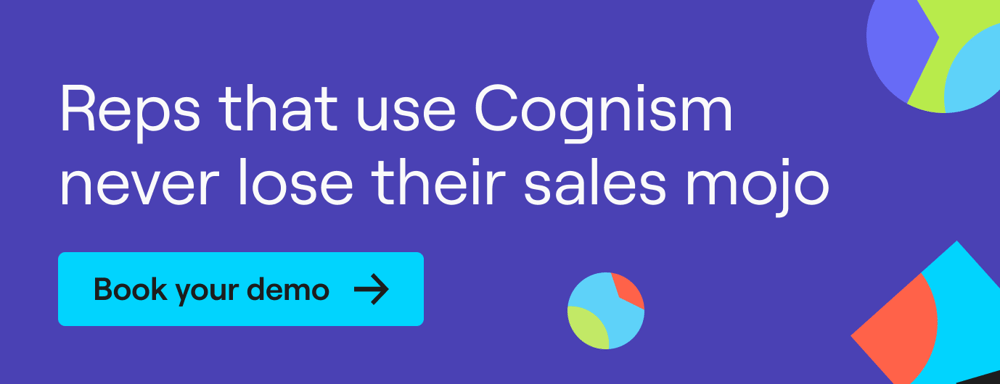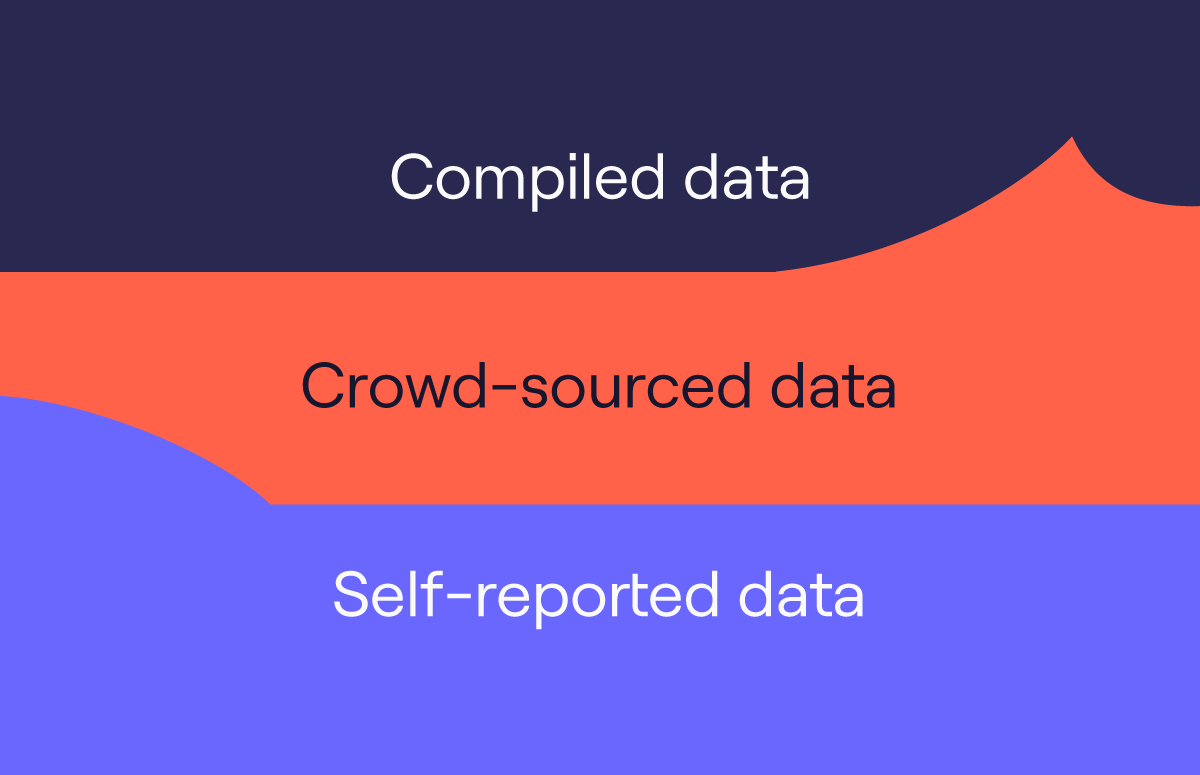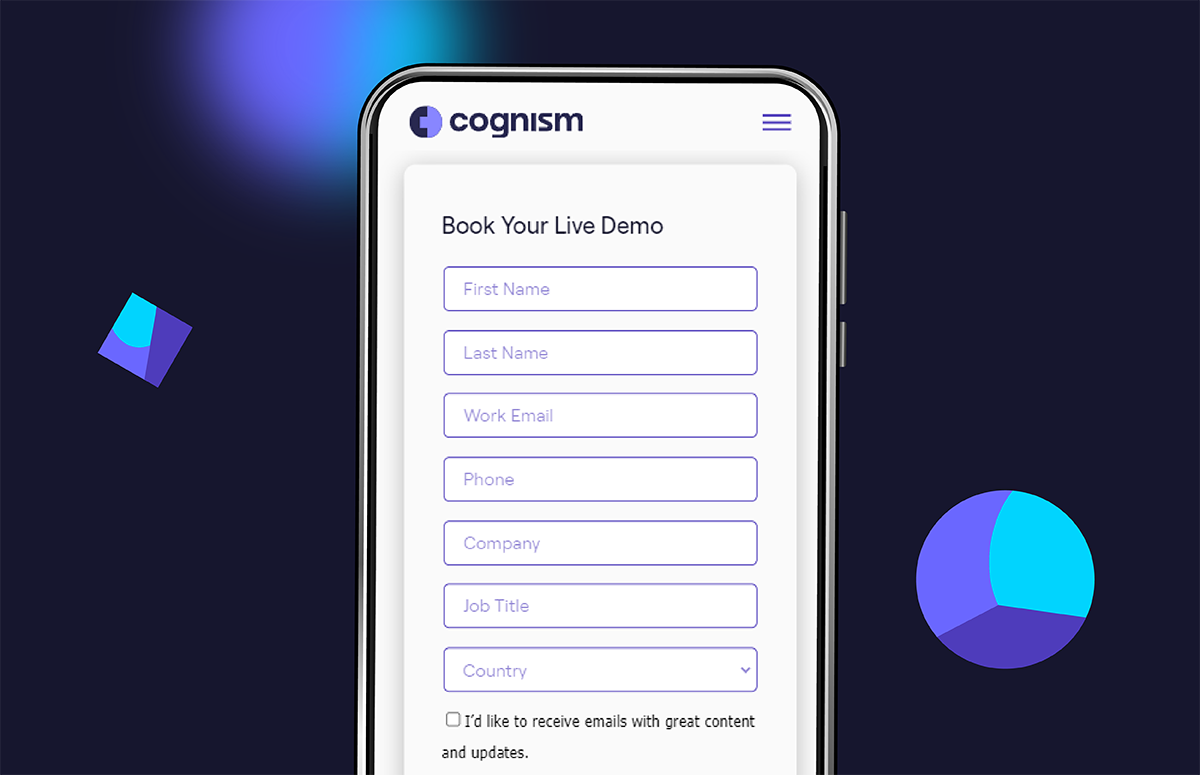Is ‘Meeting Booked’ Killing Your Reps’ Cold-Calling Mojo?
Is there a silent saboteur, lurking in the shadows, killing SDRs' cold calling mojo?
Think about it.
An excited SDR comes into the office at the beginning of a new month. They sit down holding their prospect list and hunker down to make some calls.
They're feeling pumped. This is the month they're going to try and smash numbers beyond their quota!
Then their sales leader walks over and says:
'Book meetings with 5 out of the 20 prospects on that list before the end of the day.'
Steep expectations, but it's fine - they're reading and raring to go.
After 5 calls - no meeting.
After 10 calls - no meeting.
By the end of the day, they still haven’t managed to get any meetings. Sometimes, that's just the way the cookie crumbles.
But they’ve lost all motivation to pick up the phone again. They've missed their target for the day. Their mojo has well and truly gone.
Ryan Reisert, our resident sales expert, believes the problem here is using ‘meetings booked’ as the core metric for SDR success.
Why?
Don’t worry, we’re going to explain. Just keep reading!
Chet Holmes and the sales funnel
Before we get deep into the impact of how we measure sales, it’s important to understand some key things about how the market and sales funnel works.
Firstly, let’s look at Chet Holmes’ Buyers Pyramid:
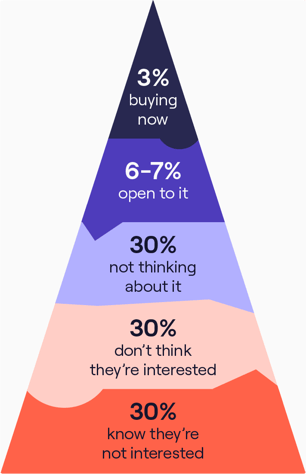
- The idea here is that in any market, at any given time…Only 3% are in a position to buy now.
- A further 7% are open to buying.
- 30% aren’t thinking about buying at all.,
- 30% don’t think they’re interested in buying.
- The final 30% know they’re not interested.
But if you flip this pyramid upside down, you’ve got a funnel.
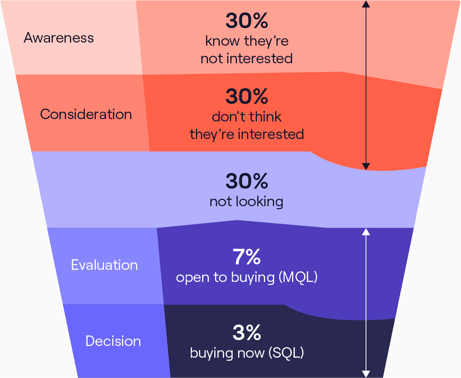
The important thing to note here is that when SDRs are given a list of people to contact, even on a highly targeted list, you’re going to have people who fall outside the ‘open to buy’ and ‘buying now’ categories.
Ryan says:
“A minimum of 6/10 of cold calls are going to end in an objection or rejection, by simple statistics. By that same logic, if you’re doing your job as an SDR right, one in every 10 conversations should lead to a meeting booked.”
“Sales development is broken if you’re only focusing on the 1/10 that are willing to book a meeting right now.”
And by the way…
There’s only one way to find out which prospect falls into which category - and that’s to have a conversation with them.
This is why Ryan believes that ‘meetings booked’ is the wrong metric to track.
Here’s his thinking:
It only focuses on those who are buying at this exact moment in time and doesn’t value the other data that can be gathered during cold calls.
It incentivises SDRs to sift through the list, looking only for those open to scheduling a meeting today, and not to discover which of the categories prospects fit into.
It means that SDRs miss out on the middle area of the list where they can make the biggest difference, e.g. the winning zone, the 30% where prospects aren’t looking yet.
Let’s not forget the role of an SDR here - sales development. That doesn’t just apply to people who are ready to buy now. Because then you’re missing out on developing sales from that other 30%.
Ryan adds:
“With value-adding content, education on the problem you solve and a change in circumstances, this 30% has the potential to convert at a later date, but they’re often pushed to the wayside and ignored.”
How do we know this process is broken?
Okay, let’s do some maths.
Ryan explains:
“Let’s assume we’re perfect - marketing has passed on a perfect list to an SDR, and the SDR is doing a perfect job outreaching to this list.”
“At 3% buying now, even if you’re perfectly matched to the market, to get one deal, that deal requires 33 opportunities. In other words, meetings held.”
“But monthly quotas for SDRs tend to be around the 9-12 meetings booked mark per month.”
This target isn’t even half the required meetings (even with a 100% attendance rate) per month to secure the number of opportunities needed for one deal.
But let’s factor in attendance - say you have a good attendance rate, a healthy 80%. That would mean you’d need to set 42 meetings in the calendar in order to get your 1 deal. And that’s if everything else is going perfectly.
Ryan says:
“You can see by the maths that the system is broken.”
Another way this system fails is it allows those other 32 opportunities who didn’t sign the deal to slip through the cracks. Instead, the SDR moves onto new prospects, trying to find the others who are buying now.
But these prospects, depending on what information is gathered on them during the calls, could be warmed up and nurtured with helpful content over time. Building trust and rapport.
This is where AEs can help fix the system.
How?
By continuing a relationship with the prospects who did take a meeting. Finding out why they didn’t. What was holding them back? And is it something you can influence?
Jumping back to the maths for a second…
Ryan showed us how for one deal on a perfect day, you need to have 42 meetings booked.
He works the maths back a step further:
“So how many conversations would you need to have for that one deal? Say you’re converting 10% of your calls into meetings, then that means you need to be having 420 conversations a month.”
“And if your dial-to-connect rate - if you’re lucky - is 5%, then you need to be having 84,000 dials a month. Just to ensure you have enough to feed the pipeline for that one deal. That's 420 dials a day.”
What’s the problem here?
It’s that most SDRs don’t make the activity metric in order to get enough ‘meetings booked’ because they’re only focusing on the people buying now.
But there’s a way to make this job easier for salespeople. Rather than always calling new prospects, retrace your steps.
Who booked a meeting then objected last month, or the month before, or the month before that, because of something like wrong timing? What happened to that opportunity to mean it didn’t close the first time around?
Think about it this way:
That prospect booked the meeting before for a reason. So if circumstances have changed, they may now be ready to commit.
That’s the point of bucketing these prospects during cold calls - it makes follow-ups much more straightforward.
And it makes sense to exhaust the list of previously booked meetings before going out to replenish it with brand new prospects.
Ryan says:
“If you understand the landscape you’re in, sales get easier over time. And if you’re perceived as someone offering valuable information rather than ramming a meeting down their throat, you’ll probably find it easier to get people interested, or at least talking.”
The list is the strategy
An important aspect of any outbound sales process is the list of people being sold to.
Ryan says:
“It seems like at the moment, no one wants to own this list. No leader wants to say ‘these are the people I want us to go after, this is our strategy and if it fails then it’s on me, not the sales reps.’”
“Because say the leader does create a list of people to speak to, and reps reach out and have conversations, but they’re not interested in booking a meeting… that’s the fault of the leader for an inaccurate list, not the reps.”
So then sales reps, in order to make their monthly quota of meetings booked and earn their wage, may opt for a less targeted, ‘spray and pray’ approach.
Because that is what they’ve been incentivised to do. That’s the best way they can see of achieving the results that the business asks of them.
This only adds to the high levels of market fatigue and churn that B2B/SaaS companies are grappling with. It also brings the reputation of salespeople down as a whole, cementing them as nuisance callers to avoid.
Ryan adds:
“The list becomes the strategy when you talk about conversations and opportunity management as the key KPIs versus meetings booked.”
Measure by completed conversations
Here’s some food for thought:
What if goals were set considering the longer term? And SDRs were incentivised to have more conversations? To nurture leads? To carry out actual sales development?
In this world, calls would be about building awareness and getting impressions. Educating prospects. Adding value. Gathering more information about what messaging resonates with them. What matters? What problems are they facing?
That’s not to say it wouldn’t be about booking meetings for demos when appropriate - but it wouldn’t be the only goal.
Instead, rather than patching off the 30% who aren’t really thinking about it yet, what if SDRs identified them and worked on a long-term sales strategy?
It would mean SDRs not dropping/ignoring prospects who aren’t ready to buy, but properly nurturing them - which also means they’d reach a buying decision quicker.
Ryan says:
“Doing things this way, over time, the percentage of meetings set should have a much higher close rate.”
“And while it might feel initially that costs are higher because you don’t see the conversions straight away, this will come down over time as those follow-ups become easier to close.”
“It becomes much more cost-effective, cleaner and more streamlined with better clients, less churn and better customer stories over time.”
Have more live conversations with your ideal buyers and never lose your sales mojo - click to see Cognism in action.
